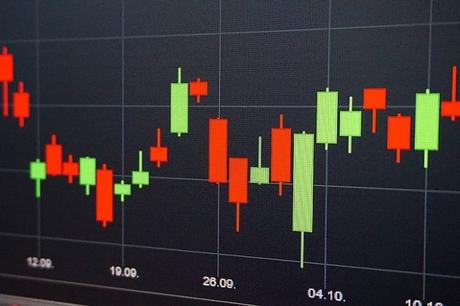
Candlestick charts have been around for more than 100 years. Originating from Japan, candlestick charts were in existence even before the West came up with bar charts. Homma, a Japanese citizen, realized that there was a connection between the price of rice and its demand and supply, this connection was heavily influenced by traders' emotions. Candlesticks represent this emotion by representing the variation in price movement with various colors. Traders use candlesticks in making trading decisions based on frequently occurring patterns that help predict the short-term trend of the price
The fact that candlestick display in-depth information relating to price movement in a particular period makes them different from other chart trading patterns such as line charts. By using a single candlestick, it is possible to establish the market's opening price, closing price, highest price as well as the lowest price. Attributed to this, candlesticks have been proven effective in determining the past and the current price of a market.
Additionally, Japanese candlesticks are often employed in technical analysis. Thus, the correct use of candlestick will enable you to improve your trading significantly increasing your profitability. This article will enable you to have a deeper understanding of candlestick patterns.
Important Tips for Candlestick Traders
Most traders prefer Japanese candlestick to other technical analysis tools in carrying out their market analysis irrespective of the asset under trade. While candlesticks can provide a near accurate price movement direction signal, they are sometimes difficult to read. For instance, a bearish looking candle can show up at a particular point in a bull market and therefore realizing how to act in such situations is the real difference between a substantial loss or profit. Below are three essential tips any candlestick trader should understand.
Knowing your candles is a key aspect of realizing trade success. You should know how to differentiate a down candle from an up candle, or a spinning top from a doji and many different candlestick formations. Additionally, you should have a deep comprehension of different candle formation formed by prevailing market conditions at any given trading point It's worth noting that candlesticks are different due to the difference in market and charts.
The length of a candle along with the significance of a doji differs depending on the market. For instance, if you are using the EUR/USD currency pair, you may want to know the difference between a long and a medium candle or a strong and an average candle.
You should understand the difference between a weak and strong signal as they provide you with the much-needed direction to act. Therefore, you should first understand what makes a good signal then find out if the signal is reliable by looking at the candles' size and shadow length. Reliable signals produced when the candles are larger than normal have longer shadows or a combination of both.
Understanding the relativity of candles is vital in distinguishing between a strong and weak signal. A strong signal will be produced when the candles are near the key support or resistance target. Buyers and sellers enter the market depending on the price levels which are formed by the support and resistance targets. Many traders will enter the market during a session of high volume or high volatility formed at one of the price levels. It is, therefore, to understand relativity as in some instances, bullishness fails to prompt a continuation by creating in a downtrend when a bullish candle breaks above the resistance.
Every candle trader should wait until a candle closes to display a signal before entering a trade. Note that long-legged shooting star and long, strong bull candles separate on closing. You may have to wait until the next day for the close therefore you should be patient. Sometimes, a strong candle may form when prices are at resistance or support levels and signal a likely continuation. However, the next candle turns out to be weak (Harami) and points to a reversal instead of a continuation. Therefore, it's crucial to wait until a candle closes before trading.

